-
 Bitcoin
Bitcoin $106,684.2039
-0.52% -
 Ethereum
Ethereum $2,399.8703
-0.98% -
 Tether USDt
Tether USDt $1.0003
0.01% -
 XRP
XRP $2.0879
-1.38% -
 BNB
BNB $643.7981
-0.29% -
 Solana
Solana $141.0383
-0.39% -
 USDC
USDC $0.9999
0.01% -
 TRON
TRON $0.2718
0.30% -
 Dogecoin
Dogecoin $0.1588
-0.85% -
 Cardano
Cardano $0.5472
-1.45% -
 Hyperliquid
Hyperliquid $36.1292
-0.48% -
 Bitcoin Cash
Bitcoin Cash $502.5414
2.20% -
 Sui
Sui $2.7016
3.59% -
 Chainlink
Chainlink $12.8198
-2.00% -
 UNUS SED LEO
UNUS SED LEO $9.0559
0.58% -
 Stellar
Stellar $0.2333
-0.73% -
 Avalanche
Avalanche $17.2524
0.16% -
 Toncoin
Toncoin $2.8273
0.70% -
 Shiba Inu
Shiba Inu $0.0...01112
-0.86% -
 Litecoin
Litecoin $83.4315
-0.94% -
 Hedera
Hedera $0.1439
0.75% -
 Monero
Monero $307.7259
-1.44% -
 Bitget Token
Bitget Token $4.6301
3.49% -
 Dai
Dai $0.9998
0.01% -
 Ethena USDe
Ethena USDe $1.0001
0.02% -
 Polkadot
Polkadot $3.3102
0.39% -
 Pi
Pi $0.5662
0.55% -
 Uniswap
Uniswap $6.8290
0.70% -
 Aave
Aave $256.8983
2.19% -
 Pepe
Pepe $0.0...08994
-2.79%
How to invest in defi currency
Before investing in DeFi, investors should carefully assess their risk tolerance and conduct thorough research to identify reputable projects with strong fundamentals and potential for growth.
Jan 10, 2025 at 06:32 pm

Considerations and Steps for Investing in DeFi
Key Considerations:
- Understanding DeFi: DeFi involves financial transactions carried out without intermediaries, relying on blockchain technology and decentralization.
- Risk Tolerance: DeFi investments can be highly volatile and carry significant risks. Investors should assess their risk tolerance before investing.
- Research and Due Diligence: Thorough research is crucial to identify reputable DeFi projects with strong fundamentals and growth potential.
- Account Security: DeFi platforms often require investors to hold custody of their own assets, making account security paramount.
Steps for Investing in DeFi:
- Establish a Cryptocurrency Exchange Account: Create an account with a reputable cryptocurrency exchange that supports DeFi transactions and offers access to a variety of DeFi tokens.
- Fund Your Account: Transfer funds to your exchange account using a supported payment method, typically fiat currency or another cryptocurrency.
- Connect to a DeFi Platform: Identify a reliable DeFi platform that aligns with your investment goals. Some popular options include Uniswap, PancakeSwap, and Aave.
- Set Up a Web3 Wallet: Web3 wallets are necessary to interact with DeFi protocols. Popular options include MetaMask, Coinbase Wallet, and Trust Wallet.
- Connect Your Wallet to the DeFi Platform: Authorize your Web3 wallet to access your DeFi platform account, enabling you to execute transactions and manage your assets.
- Research and Select DeFi Tokens: Explore the available DeFi tokens on the platform. Read whitepapers, check project documentation, and consider factors such as market cap, liquidity, and project roadmap.
- Place Your Order: Determine the amount of the DeFi token you wish to purchase and execute the trade through the DeFi platform.
- Manage Your Investments: Monitor the performance of your DeFi investments regularly. Rebalance your portfolio as needed, and consider staking your tokens to earn passive income.
FAQs:
Q: What are the benefits of investing in DeFi?
A: DeFi offers potential benefits such as higher returns, greater accessibility to financial services, and reduced dependence on intermediaries.
Q: What are the risks associated with DeFi?
A: DeFi investments are subject to price volatility, potential hacks, and vulnerabilities within smart contracts.
Q: How can I invest in DeFi without holding custody of my assets?
A: Consider using a centralized exchange that offers DeFi products while providing custodian services for your assets.
Q: What are some reputable DeFi platforms?
A: Some well-known DeFi platforms include Uniswap, PancakeSwap, Aave, Yearn Finance, and Curve Finance.
Q: How can I earn passive income from DeFi?
A: Staking, lending, and liquidity providing are common methods to generate passive income through DeFi investments.
Disclaimer:info@kdj.com
The information provided is not trading advice. kdj.com does not assume any responsibility for any investments made based on the information provided in this article. Cryptocurrencies are highly volatile and it is highly recommended that you invest with caution after thorough research!
If you believe that the content used on this website infringes your copyright, please contact us immediately (info@kdj.com) and we will delete it promptly.
- Queenstown Tech Super-charging: A Glimpse into the Future
- 2025-06-28 00:30:12
- Dogecoin, Ethereum, Solana: Decoding the Crypto Climate in the Big Apple
- 2025-06-28 00:47:15
- Tokenized Securities in Hong Kong: On-Chain Revolution?
- 2025-06-28 01:30:12
- SHIB Price Target: Can Shiba Inu Achieve a Technical Rally to $0.000081?
- 2025-06-28 01:30:12
- Gotta Go Fast! Sonic the Hedgehog Dashes into Magic: The Gathering's Secret Lair!
- 2025-06-28 01:35:12
- Ripple, Ondo, and Unstaked: Navigating Crypto's Choppy Waters
- 2025-06-28 01:50:12
Related knowledge
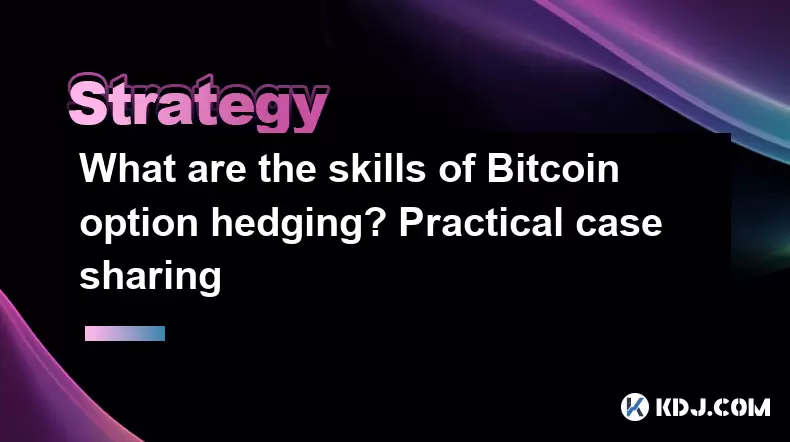
What are the skills of Bitcoin option hedging? Practical case sharing
Jun 24,2025 at 04:01pm
Understanding Bitcoin Option HedgingBitcoin option hedging is a risk management strategy used by traders and investors to protect their positions in the volatile cryptocurrency market. By using options, individuals can limit potential losses while retaining the opportunity for profit. In essence, it allows one to insulate against adverse price movements...
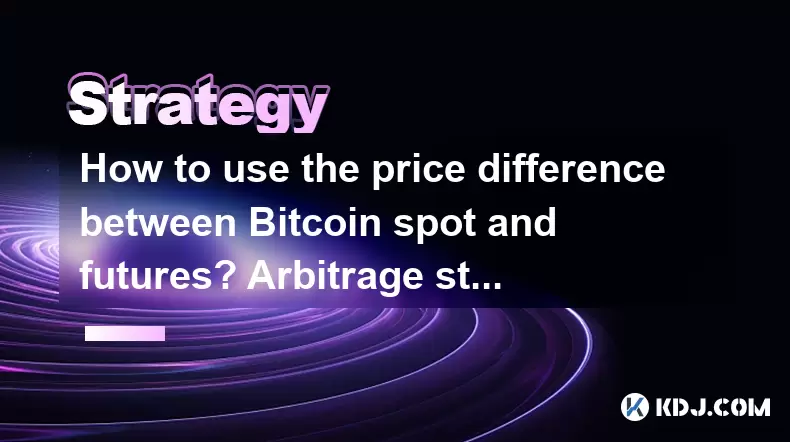
How to use the price difference between Bitcoin spot and futures? Arbitrage strategy
Jun 20,2025 at 02:56pm
Understanding Bitcoin Spot and Futures MarketsTo effectively leverage arbitrage opportunities between Bitcoin spot and futures markets, it's essential to understand the fundamental differences between these two types of markets. The spot market refers to the direct buying and selling of Bitcoin for immediate delivery at the current market price. In cont...
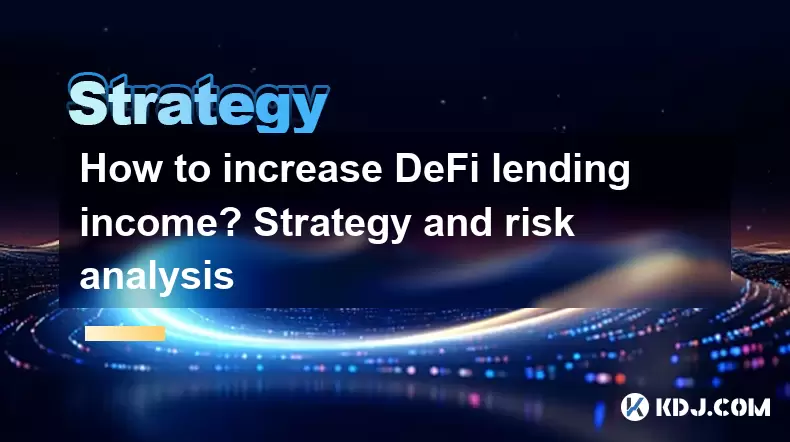
How to increase DeFi lending income? Strategy and risk analysis
Jun 24,2025 at 02:08pm
Understanding DeFi Lending and Its Income PotentialDeFi (Decentralized Finance) lending has emerged as a popular way to earn passive income in the cryptocurrency space. Unlike traditional banking systems, DeFi lending platforms allow users to lend their crypto assets directly to borrowers without intermediaries. The lenders earn interest based on the su...
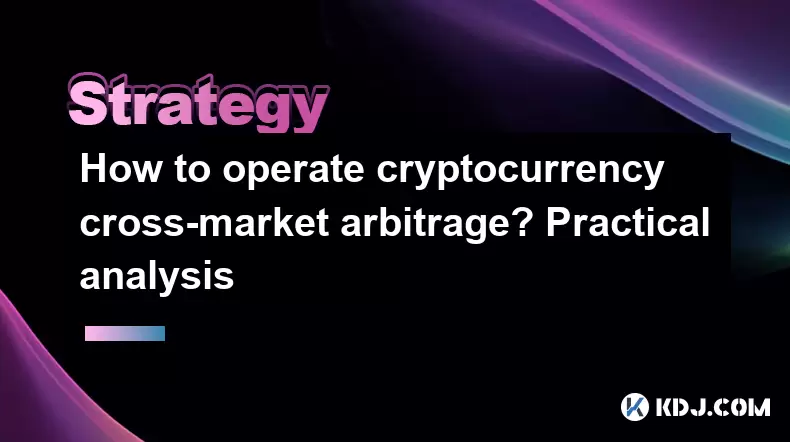
How to operate cryptocurrency cross-market arbitrage? Practical analysis
Jun 23,2025 at 04:01am
Understanding Cryptocurrency Cross-Market ArbitrageCryptocurrency cross-market arbitrage involves taking advantage of price differences for the same digital asset across different exchanges. The core idea is to buy low on one exchange and sell high on another, capturing the profit from the discrepancy. This strategy relies heavily on real-time market da...

How to make profits from high-frequency cryptocurrency trading? Sharing core skills
Jun 19,2025 at 05:07pm
Understanding High-Frequency Cryptocurrency TradingHigh-frequency trading (HFT) in the cryptocurrency market involves executing a large number of trades at extremely fast speeds, often within milliseconds. This method relies on small price discrepancies across exchanges or within a single exchange’s order book. Traders use complex algorithms and ultra-l...
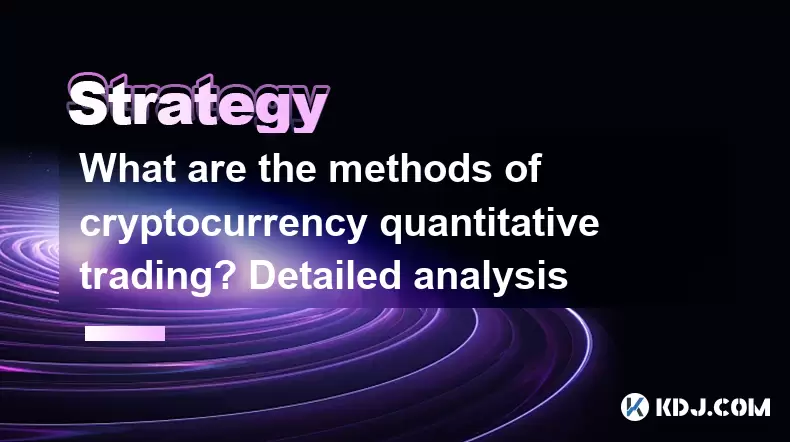
What are the methods of cryptocurrency quantitative trading? Detailed analysis
Jun 22,2025 at 11:07pm
Understanding the Core of Cryptocurrency Quantitative TradingCryptocurrency quantitative trading refers to the use of mathematical models and algorithms to execute trades in the digital asset market. Unlike traditional discretionary trading, which relies heavily on human judgment, quantitative trading leverages data-driven strategies to identify profita...

What are the skills of Bitcoin option hedging? Practical case sharing
Jun 24,2025 at 04:01pm
Understanding Bitcoin Option HedgingBitcoin option hedging is a risk management strategy used by traders and investors to protect their positions in the volatile cryptocurrency market. By using options, individuals can limit potential losses while retaining the opportunity for profit. In essence, it allows one to insulate against adverse price movements...

How to use the price difference between Bitcoin spot and futures? Arbitrage strategy
Jun 20,2025 at 02:56pm
Understanding Bitcoin Spot and Futures MarketsTo effectively leverage arbitrage opportunities between Bitcoin spot and futures markets, it's essential to understand the fundamental differences between these two types of markets. The spot market refers to the direct buying and selling of Bitcoin for immediate delivery at the current market price. In cont...

How to increase DeFi lending income? Strategy and risk analysis
Jun 24,2025 at 02:08pm
Understanding DeFi Lending and Its Income PotentialDeFi (Decentralized Finance) lending has emerged as a popular way to earn passive income in the cryptocurrency space. Unlike traditional banking systems, DeFi lending platforms allow users to lend their crypto assets directly to borrowers without intermediaries. The lenders earn interest based on the su...

How to operate cryptocurrency cross-market arbitrage? Practical analysis
Jun 23,2025 at 04:01am
Understanding Cryptocurrency Cross-Market ArbitrageCryptocurrency cross-market arbitrage involves taking advantage of price differences for the same digital asset across different exchanges. The core idea is to buy low on one exchange and sell high on another, capturing the profit from the discrepancy. This strategy relies heavily on real-time market da...

How to make profits from high-frequency cryptocurrency trading? Sharing core skills
Jun 19,2025 at 05:07pm
Understanding High-Frequency Cryptocurrency TradingHigh-frequency trading (HFT) in the cryptocurrency market involves executing a large number of trades at extremely fast speeds, often within milliseconds. This method relies on small price discrepancies across exchanges or within a single exchange’s order book. Traders use complex algorithms and ultra-l...

What are the methods of cryptocurrency quantitative trading? Detailed analysis
Jun 22,2025 at 11:07pm
Understanding the Core of Cryptocurrency Quantitative TradingCryptocurrency quantitative trading refers to the use of mathematical models and algorithms to execute trades in the digital asset market. Unlike traditional discretionary trading, which relies heavily on human judgment, quantitative trading leverages data-driven strategies to identify profita...
See all articles























































































